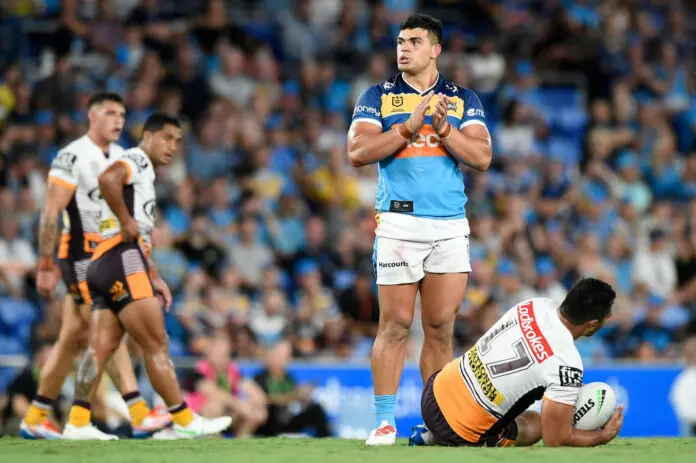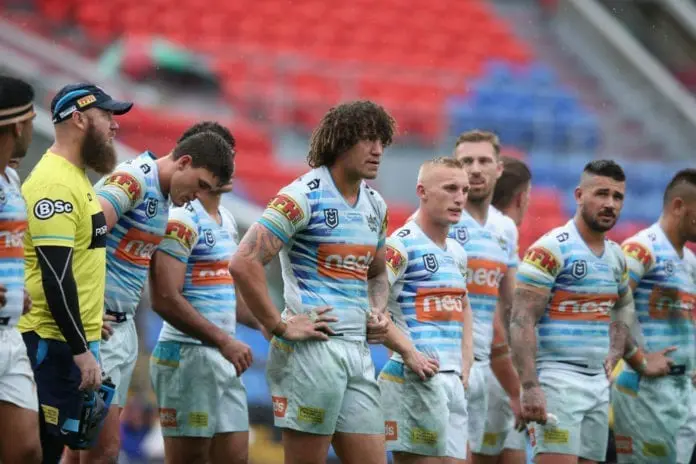The best sporting clubs regularly cite the importance of culture and tradition in establishing themselves at the pinnacle of their respective leagues.
But there’s one region just south of Brisbane that can’t shake what has become an unwanted tradition – one that spans a cycle of years, where optimism and hope is briefly lifted before being abandoned like an e-scooter.
It’s a place where big names arrive, believing they might be able to make a difference. A place where, whether on the field or on the strip, shiny promises are made but rarely delivered.
Welcome to the Gold Coast, where the names change but things remain the same - home of the Titans and a long list of Australian sporting disappointments.
And it’s all happening again.
The uphill climb
After the chaotic end of the Neill Henry-Jarryd Hayne era and a wooden spoon during Garth Brennan’s short-lived time at the top, the Titans landed a new coach for 2020 in Justin Holbrook – a proven success at Super League giants St Helens.
He wasn’t going to be an instant fix, but he brought with him experience and standards that were supposed to help elevate the team from the bottom of the table.
Four games into his tenure the Titans had ended a 364-day losing streak, and by the end of Holbrook’s first year, the wooden spooners had jumped to ninth.
Optimism slowly resurfaced in a region that had suffered so long through the drudgery of the Giants, Seagulls and Chargers era and the wild inconsistency the Titans had offered so far. It was time to dream again.

In late 2020, with the team improving, fans were buoyed by the incredible news that they’d landed renowned excitement machine David Fifita from the Broncos.
A host of handy additions came on board during this time, including Tino Fa’asuamaleaui. They added depth and talent to a roster that already included dynamic youngsters like Moeaki Fotuaika, Philip Sami and AJ Brimson.
If the jump in standings had lifted spirits, they were about to go through the roof as Holbrook, Fifita and co went one better in 2021, taking the Titans to the finals for the first time in five years.
Things were clearly on the improve. With minimal squad turnover and a good pre-season, there was no way the team could go backward.
That familiar feeling
Yet here we are, Round 17, 2022. The Titans haven’t just taken a backward step, they’ve plunged off a cliff.
Despite their talented roster and their relative stability between seasons, they are dead last on the NRL ladder. They’re two points behind their nearest rivals and 12 points outside the Top 8 with eight rounds to play. Even if they win every game, it’d take an unprecedented miracle for them to make the finals.
The club has already launched an internal review that it’s believed will call for Holbrook’s head within days. The coach himself admitted he was at a loss after last week’s capitulation to the Newcastle Knights.
While coaches are always first in the firing line, it’s hard to believe that Holbrook’s approach is the sole catalyst for what’s happened this year. It would make no sense to change a process that has been achieving gradual improvement, especially so disastrously.
The club has been without key personnel for periods. Fifita has played just 10 games for the year with mixed levels of enthusiasm, while Jayden Campbell has been injured since Round 13. Kevin Proctor and Phillip Sami have also been out since the middle of May.

But it’s not like the Titans don’t have more talent coming through, with Toby Sexton, Erin Clark, Greg Marzhew and Beau Fermor still plying their trade. They’re not tried-and-tested NRL starters, but they’ve each shown plenty of ability.
So with a proven coach, a host of game-breaking big names and young talent, plus a positive season to build on, how has the club found itself so far down a hole that even Wests Tigers and the Bulldogs seem well-run by comparison?
The curse of the Coast
The Gold Coast teams' combined records make for appalling reading. Of the past 15 seasons, only two have ended with a win ratio of 50 per cent or better for the Titans.
Looking back at the early days is even worse – their best season in eleven years saw them win 10 of 21 games.
Only two other teams haven't won a premiership in the 34 years since the Gold Coast arrived on the national football landscape - the Warriors and Eels. Both have been to grand finals and in the case of Parramatta they managed to win three titles in the same decade the Giants first appeared.
That’s 26 years with just two seasons of what could be called success. A strange problem that points less to the coach and players and more to a wider issue that is far more difficult to define when you look at the bigger picture.
It’s an oft-repeated fact that no team from the Gold Coast has won a premiership in a major Australian sporting code. More alarming is the fact that none of these teams have come close, regularly languishing near the bottom of their respective ladders.
In the AFL, the Gold Coast Suns have never played finals football despite being in their 12th season. Meanwhile the GWS Giants arrived a year later and have already been to the finals five times and a grand final once.
In the NBL the long-gone Gold Coast Rollers (nee Cougars) enjoyed a winning record in just one of their seven seasons, never making the finals.
In the A-League, Gold Coast United enjoyed a brief period of early success but was quickly undone by financial and other issues created by the unstable leadership of Clive Palmer. After just three seasons their license was revoked.
It’s a tradition of instability that transcends the shape of the ball being used – so what’s the problem? What kind of issue could be so pronounced that it has universally doomed teams from the region to perpetual disappointment?
No matter the code, no matter the profile of players and staff recruited, no matter the strengh of the competition, no matter how close they may fly to the sun for a short while, teams on the Gold Coast always come crashing down, taking the aspirations of the community with them.
The cause of the Gold Coast curse will likely be studied for aeons, like the curse of King Tut’s tomb or that painting of the crying boy. Maybe there is no answer. Maybe it'll take a shaman or an exorcist. Or maybe it's merely a decades-long coincidence.
With the season ready to be written off, firing Justin Holbrook isn’t going to fix the issue. If Hollywood and horror fiction have taught us anything, it will just start the curse over again.
But after a quarter of a century with little to show for it, maybe it’s time for the Titans to keep the faith and end the cycle.
Or just move to Perth.
Not because of the fans, not because of the region.
Because of the curse.






